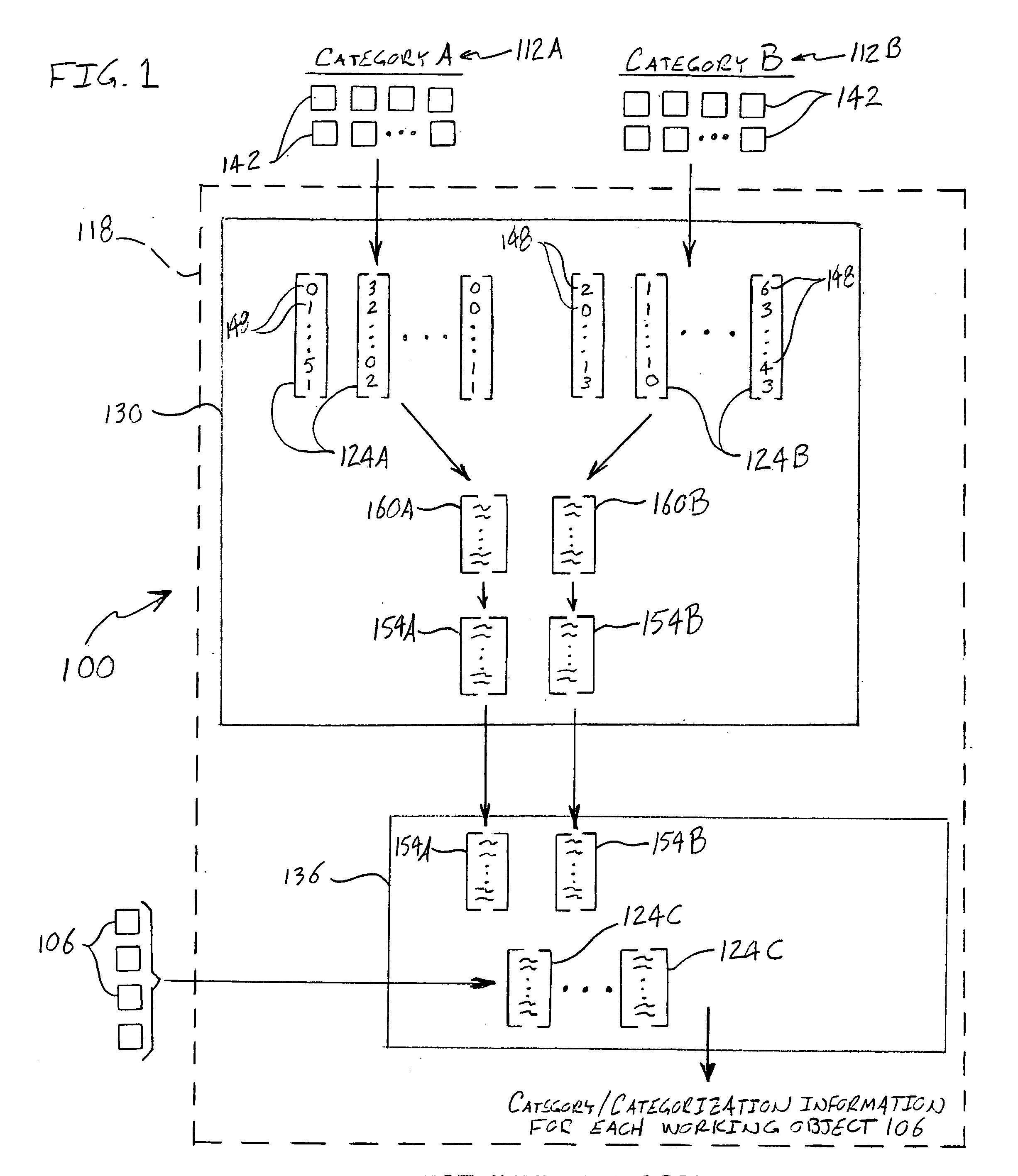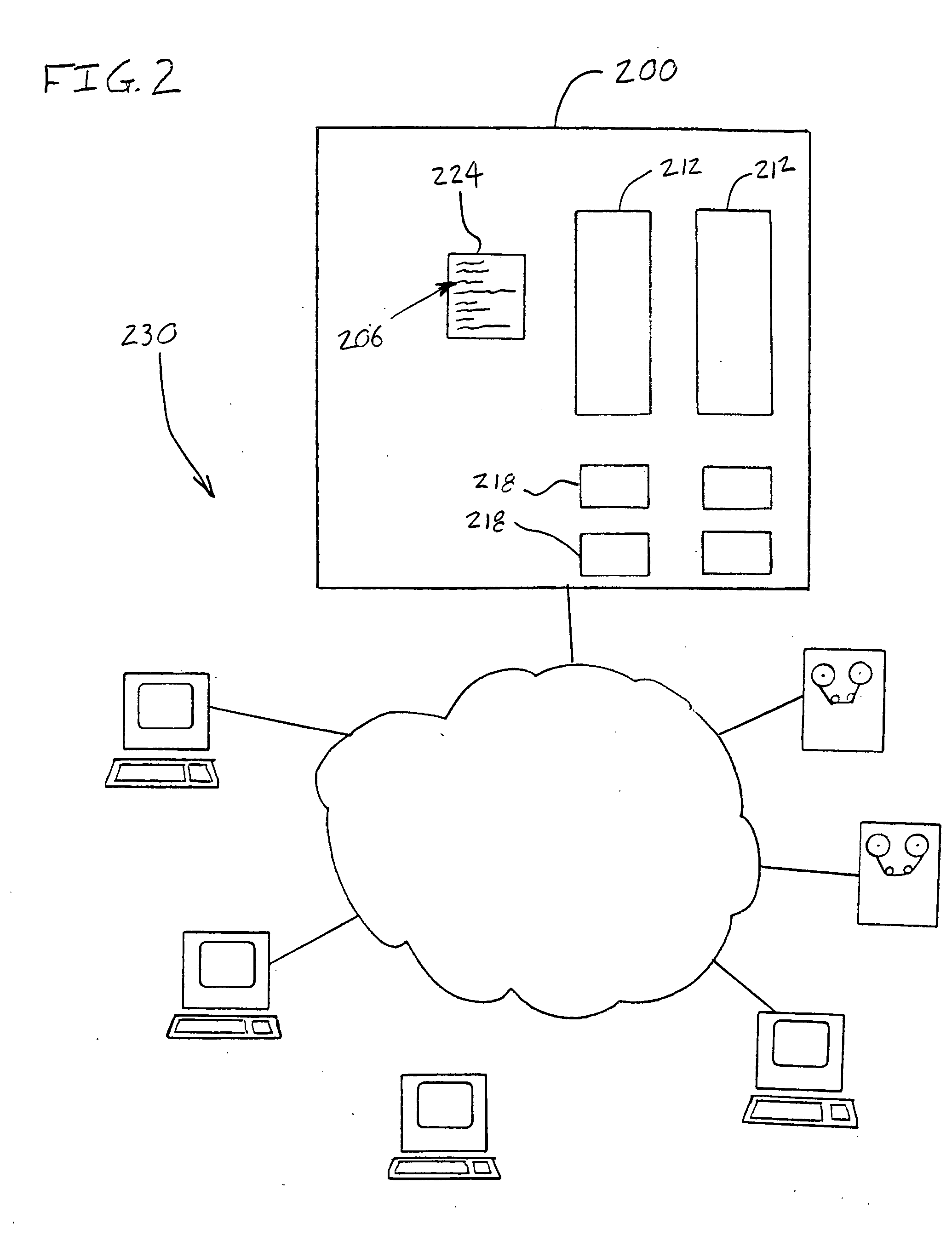System and method for automatically categorizing objects using an empirically based goodness of fit technique
a technology of automatic categorization and goodness of fit, applied in the field of classification, can solve the problems of new research showing invalidity, new research showing error, and using bayesian spam filter
- Summary
- Abstract
- Description
- Claims
- Application Information
AI Technical Summary
Benefits of technology
Problems solved by technology
Method used
Image
Examples
embodiments
[0046] Those skilled in the art will understand that a Levine engine of the present invention, such as engine 118 of FIG. 1, may be readily embodied in any of a wide variety of computer systems, such as computer system 200 of FIG. 2. That is, computer programmers skilled in the art can readily produce the computer instructions necessary to perform, among other things, any one or more of the following functions discussed above and below in connection with specific examples of the present invention: [0047] (1) receiving and manipulating a plurality of training objects (e.g., training objects 142) and a plurality of working objects (e.g., working objects 106) to be categorized; [0048] (2) receiving and manipulating information regarding a plurality of categories (e.g., categories 112A, 112B) to which the plurality of training objects belong and to which each of the plurality of working objects may be compared for goodness-of-fit; [0049] (3) generating and manipulating an object profile...
examples
[0058] Following are two exemplary implementations of an object categorizing system of the present invention, e.g., system 100 of FIG. 1. Both implementations are directed to the filtering of email messages that a user does not desire to read, i.e., “spam,” to separate the spam from the messages that the user desires to read, hereinafter “not spam.” Consequently, both of these implementations utilize only two categories. Of course, as discussed above, an object categorizing system of the present invention may utilize more than two categories. The number of categories for any given application will generally be dependent upon the application and the results desired for that application.
[0059] Those skilled in the art will also appreciate that even in a spam filtering context, more than two categories may be used. Another implementation may utilize the categories “spam,”“not spam,”“neither,” and “both.” Here, the choice of the number of categories generally depends upon how the imple...
PUM
 Login to View More
Login to View More Abstract
Description
Claims
Application Information
 Login to View More
Login to View More - R&D
- Intellectual Property
- Life Sciences
- Materials
- Tech Scout
- Unparalleled Data Quality
- Higher Quality Content
- 60% Fewer Hallucinations
Browse by: Latest US Patents, China's latest patents, Technical Efficacy Thesaurus, Application Domain, Technology Topic, Popular Technical Reports.
© 2025 PatSnap. All rights reserved.Legal|Privacy policy|Modern Slavery Act Transparency Statement|Sitemap|About US| Contact US: help@patsnap.com



